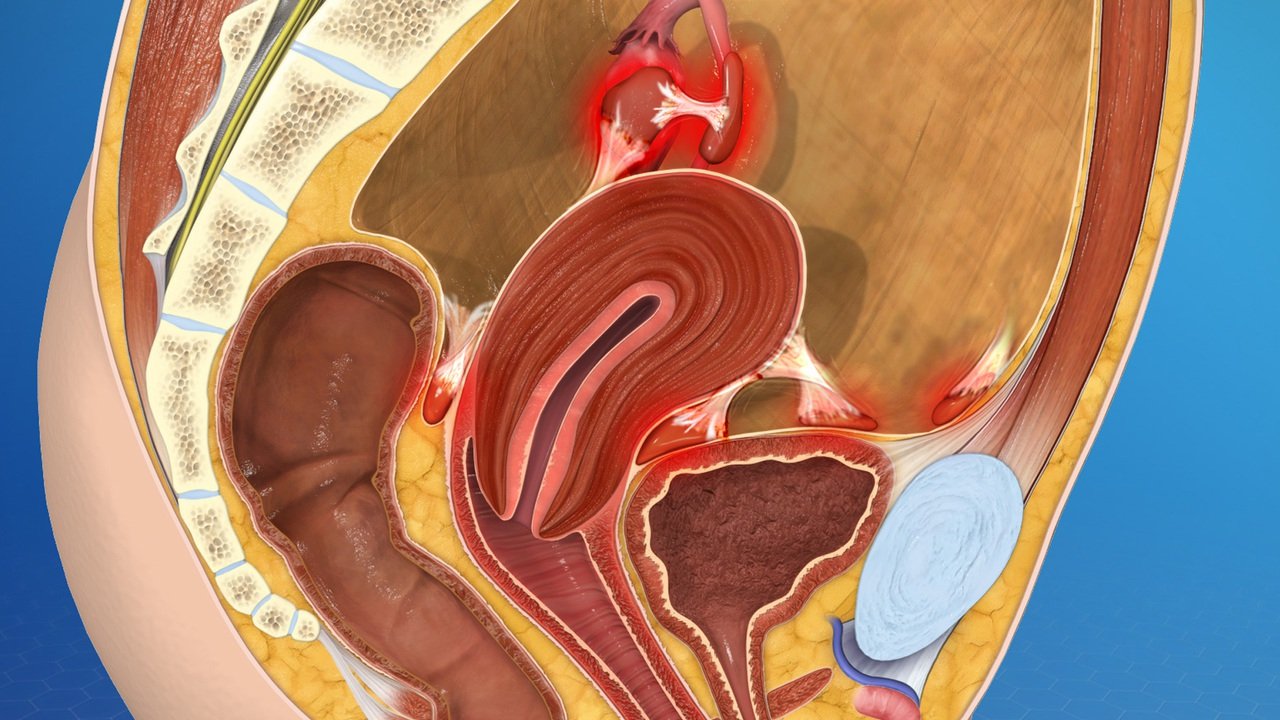Endometriosis :
Endometriosis (en-doe-me-tree-O-sis) is an often painful disorder in which tissue similar to the tissue that normally lines the inside of your uterus — the endometrium — grows outside your uterus. Endometriosis most commonly involves your ovaries, fallopian tubes and the tissue lining your pelvis.
With endometriosis, the endometrial-like tissue acts as endometrial tissue would — it thickens, breaks down and bleeds with each menstrual cycle. But because this tissue has no way to exit your body, it becomes trapped. When endometriosis involves the ovaries, cysts called endometriomas may form. Surrounding tissue can become irritated, eventually developing scar tissue and adhesions — bands of fibrous tissue that can cause pelvic tissues and organs to stick to each other. Endometriosis can cause pain — sometimes severe — especially during menstrual periods. Fertility problems also may develop. Fortunately, effective treatments are available.
Symptoms :
Common signs and symptoms of endometriosis include:
• Painful periods (dysmenorrhea). Pelvic pain and
cramping may begin before and extend several days into a
menstrual period. You may also have lower back and abdominal
pain..
• Pain with intercourse. Pain during or after sex is
common with endometriosis.
• Pain with bowel movements or urination. You're most
likely to experience these symptoms during a menstrual
period.
• Excessive bleeding You may experience occasional
heavy menstrual periods or bleeding between periods
(intermenstrual bleeding)..
• Infertility. Sometimes, endometriosis is first
diagnosed in those seeking treatment for infertility.
• Other signs and symptoms. You may experience fatigue,
diarrhea, constipation, bloating or nausea, especially during
menstrual periods.
Endometriosis risk factors
Several factors place you at greater risk of developing
endometriosis, such as:
• Never giving birth
• Starting your period at an early age
• Going through menopause at an older age
• Short menstrual cycles — for instance, less than 27 days
• Heavy menstrual periods that last longer than seven days
• Having higher levels of estrogen in your body or a greater
lifetime exposure to estrogen your body produces
• Low body mass index
• One or more relatives (mother, aunt or sister) with
endometriosis.
• Any medical condition that prevents the passage of blood
from the body during menstrual periods
• Disorders of the reproductive tract


